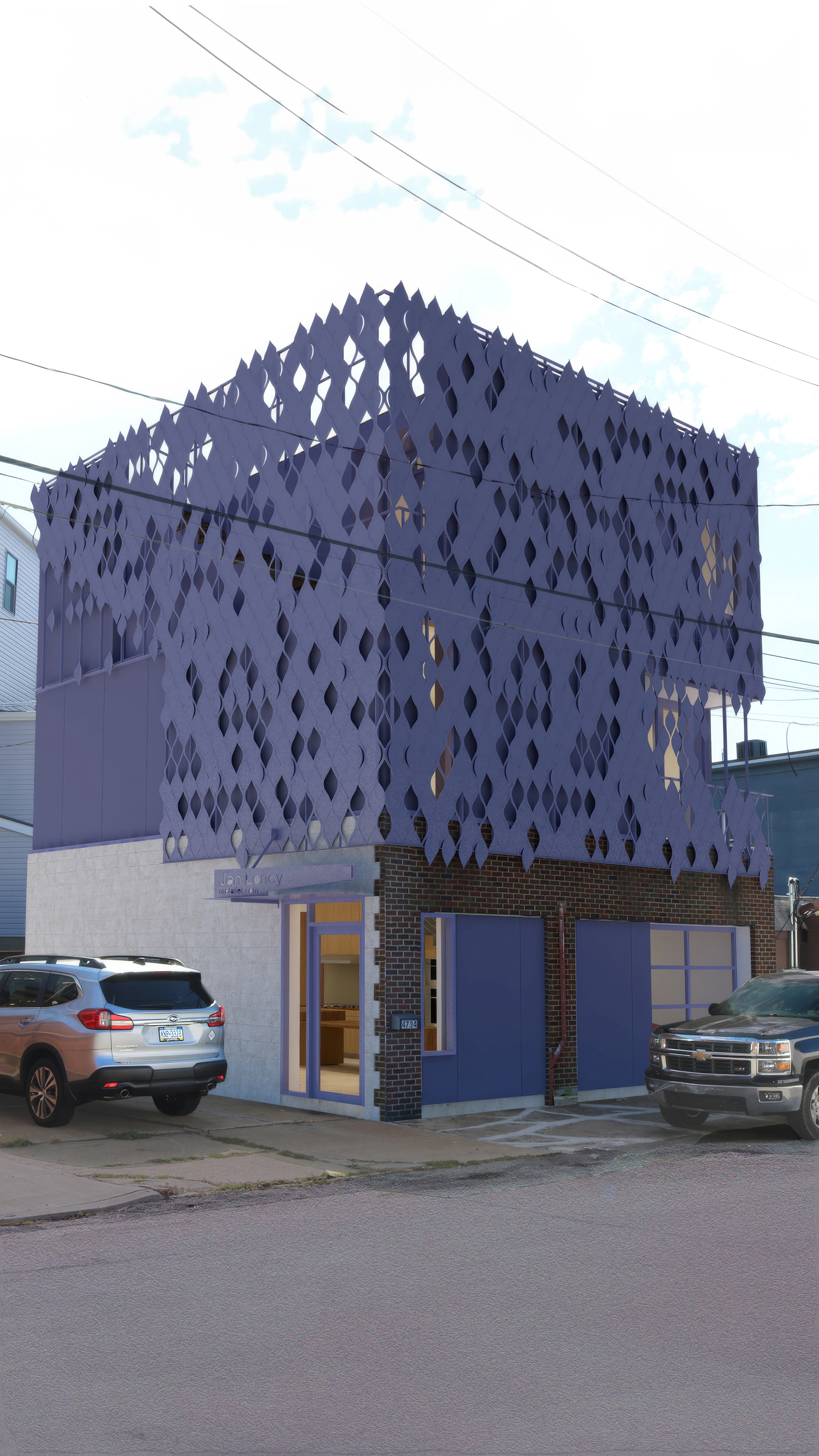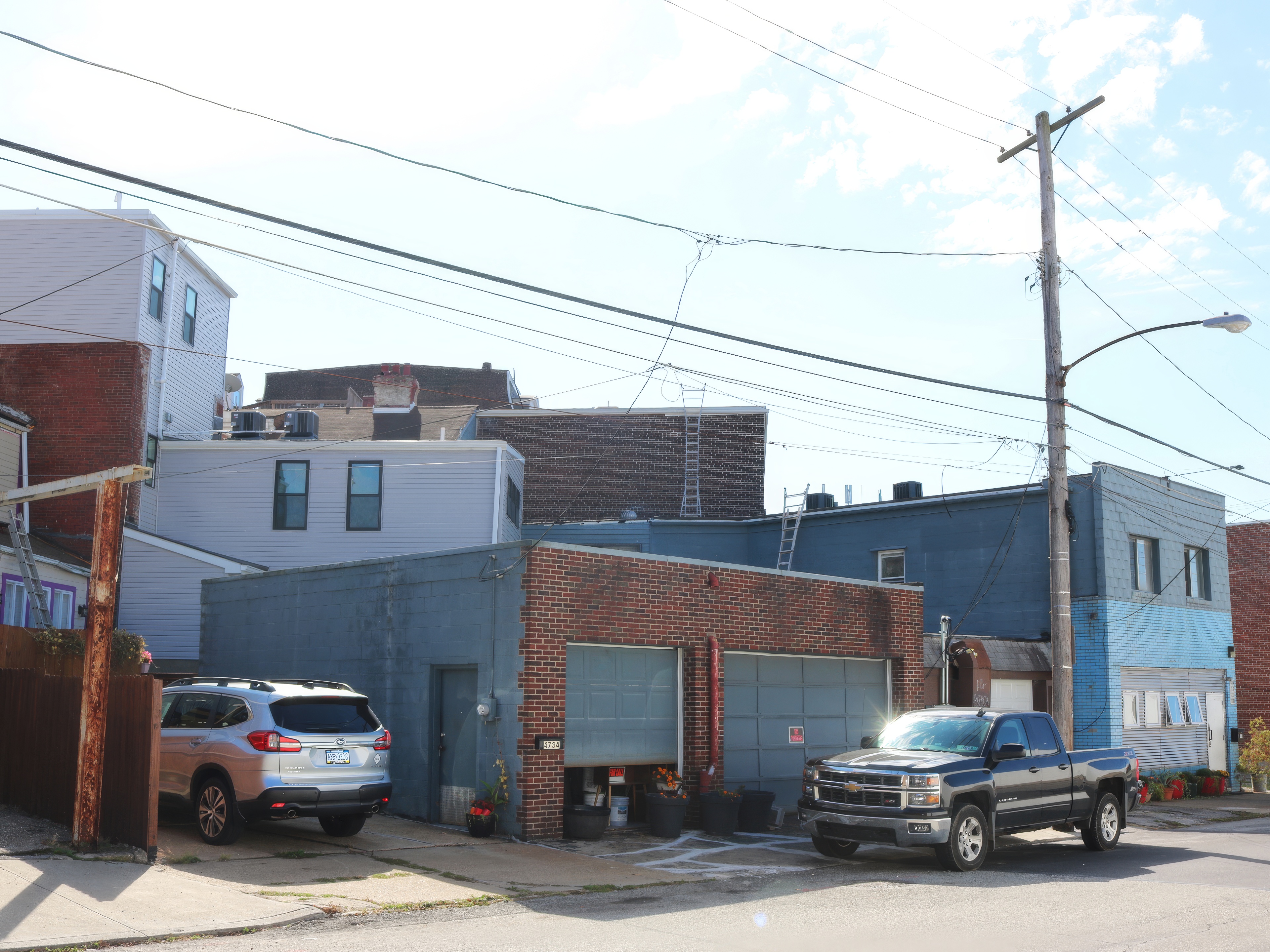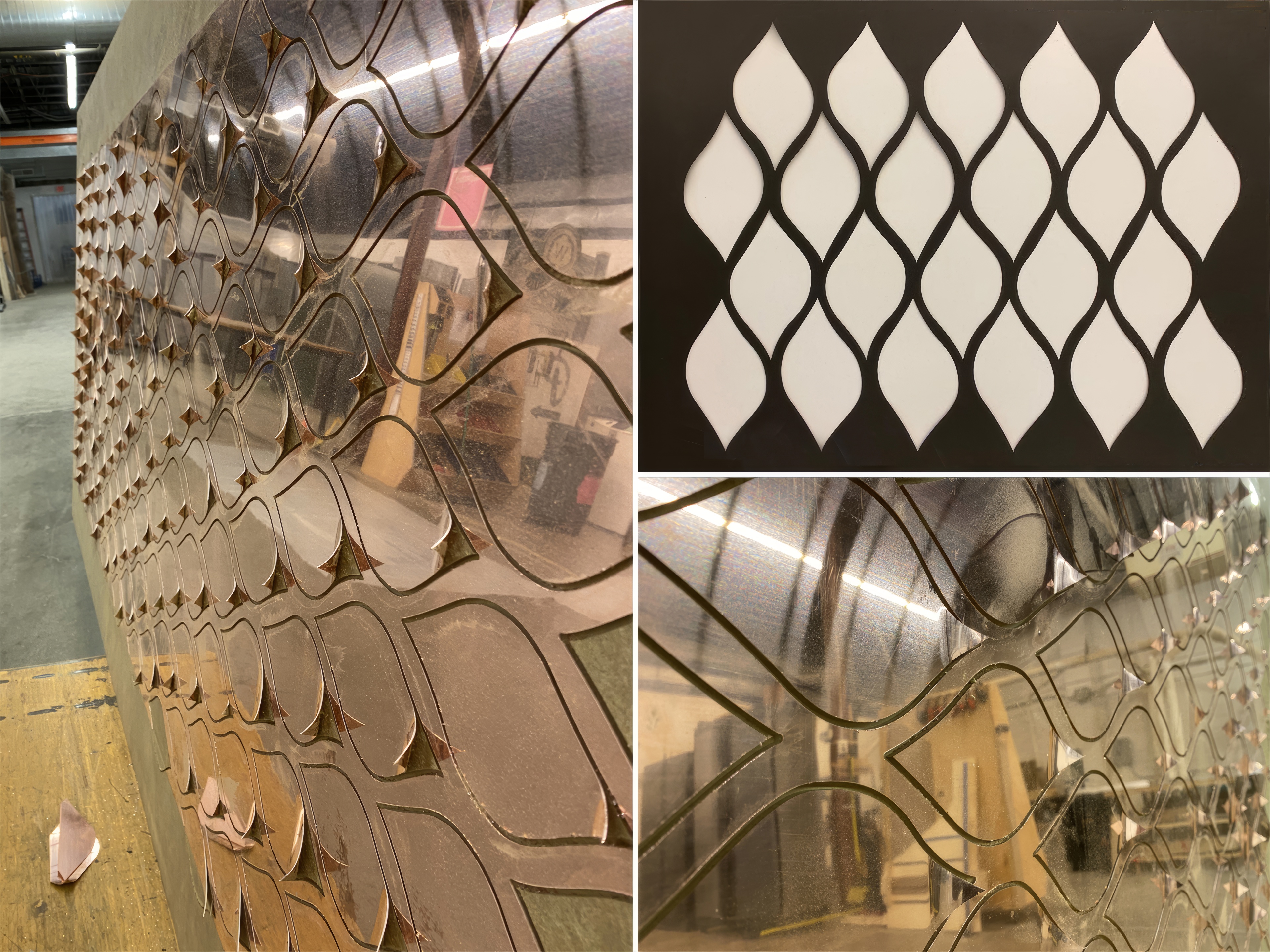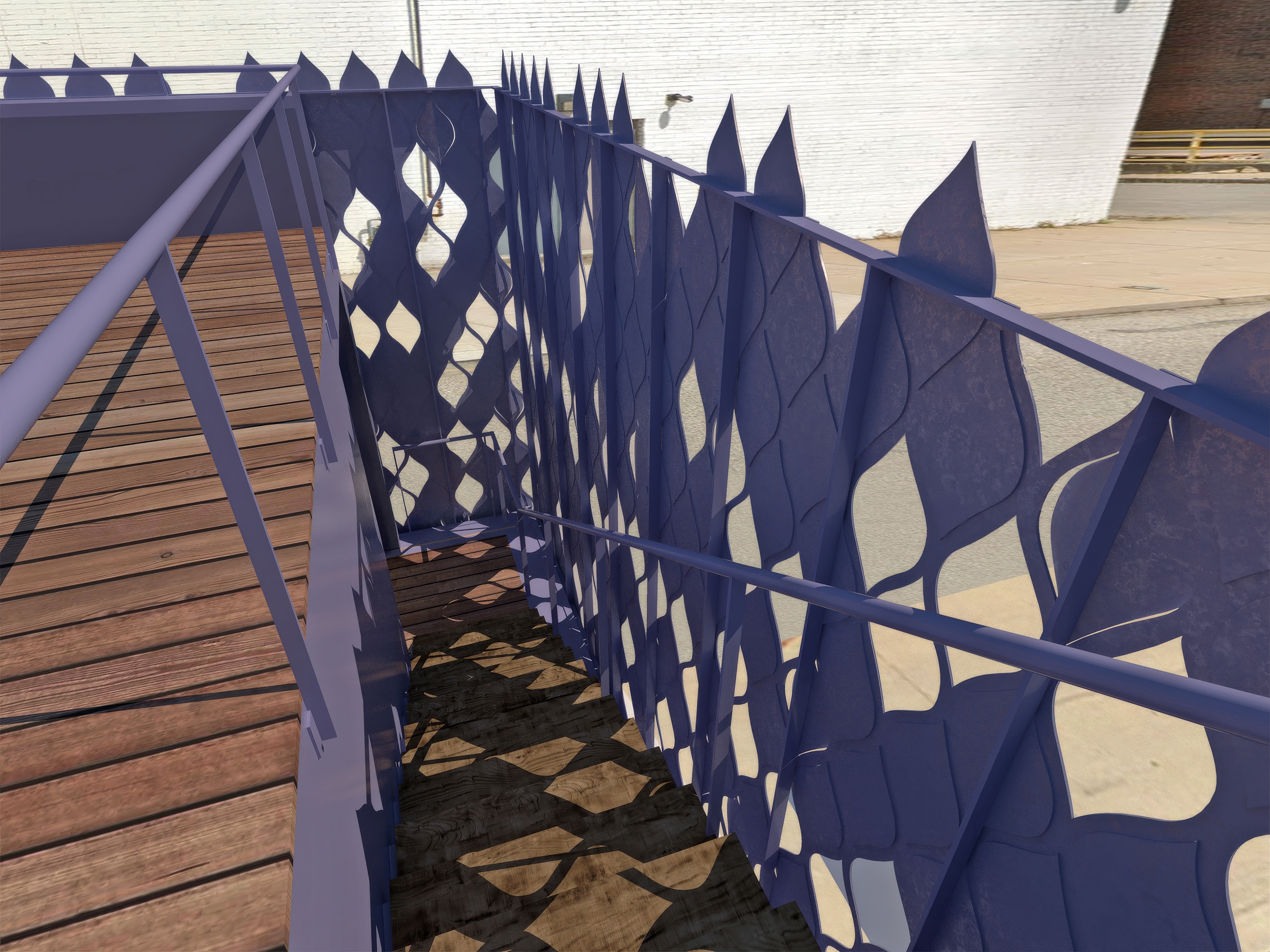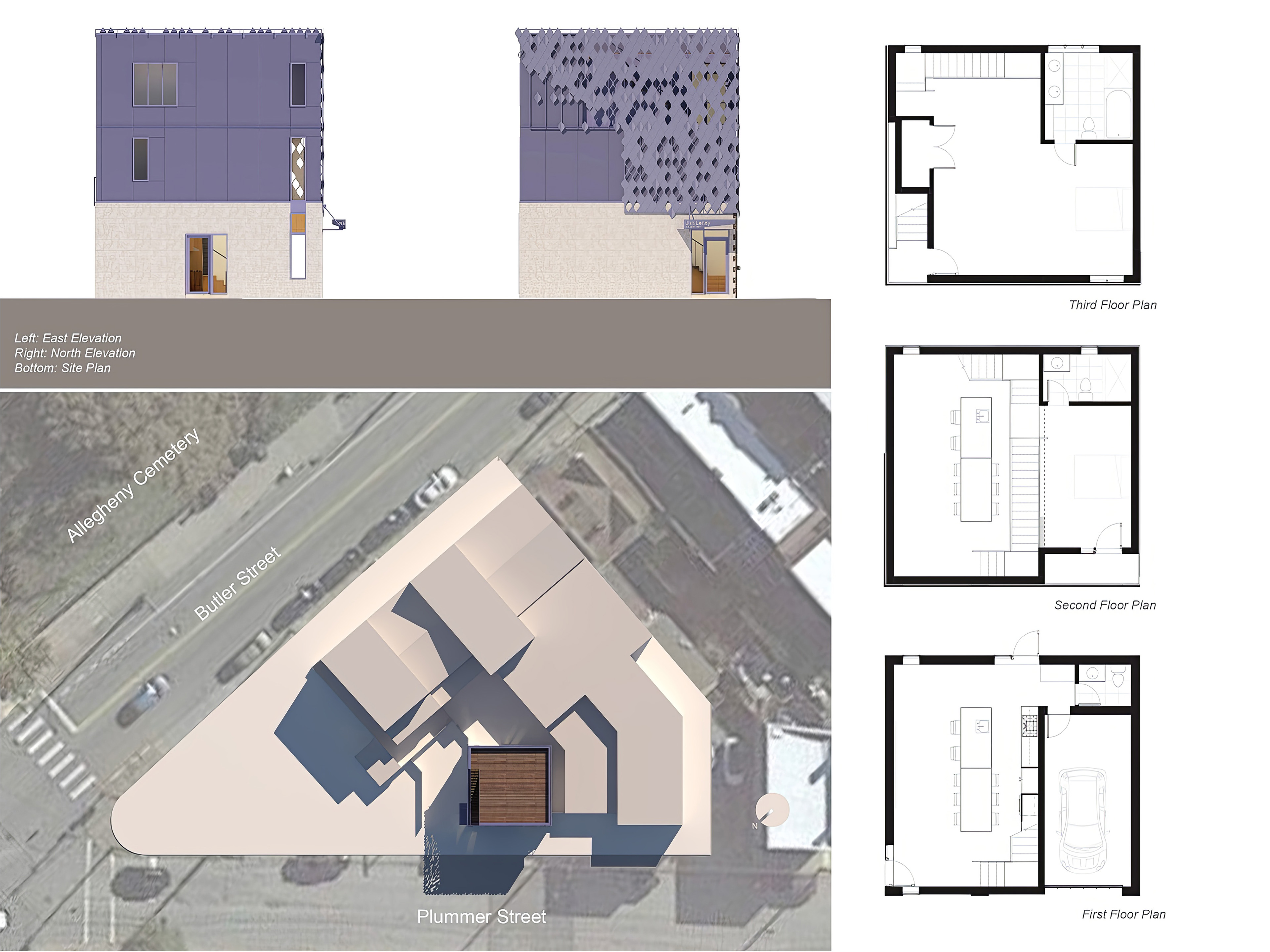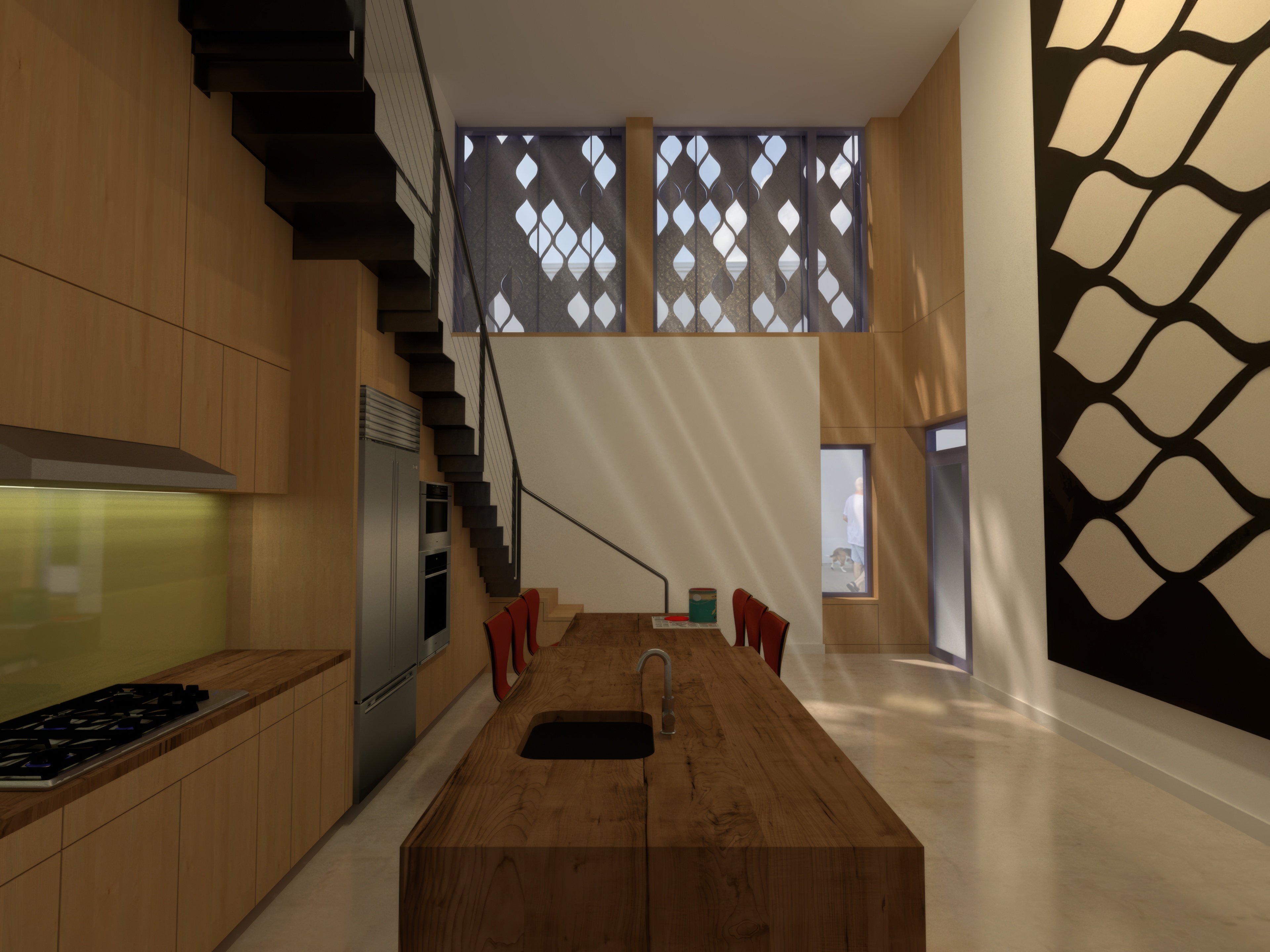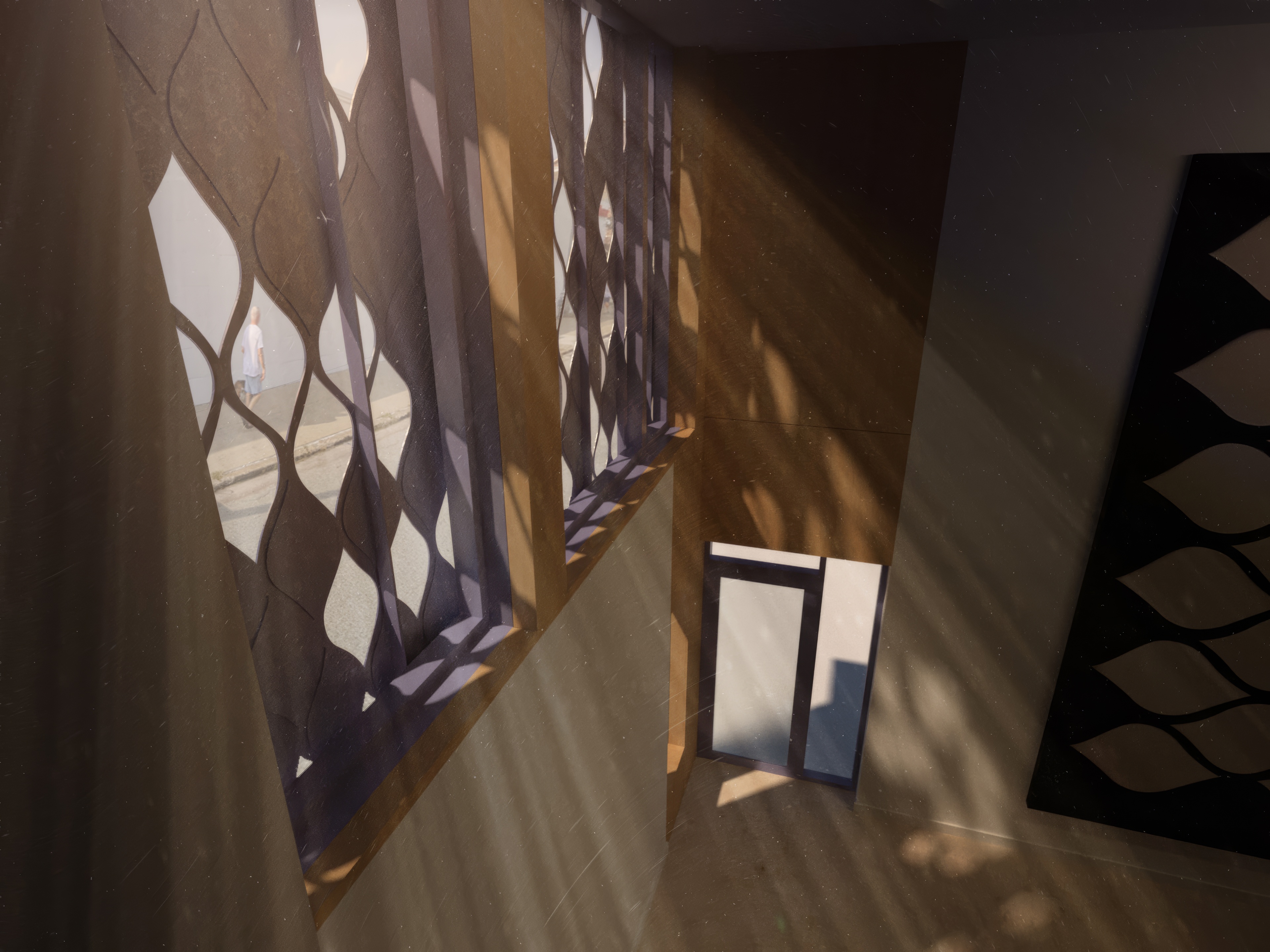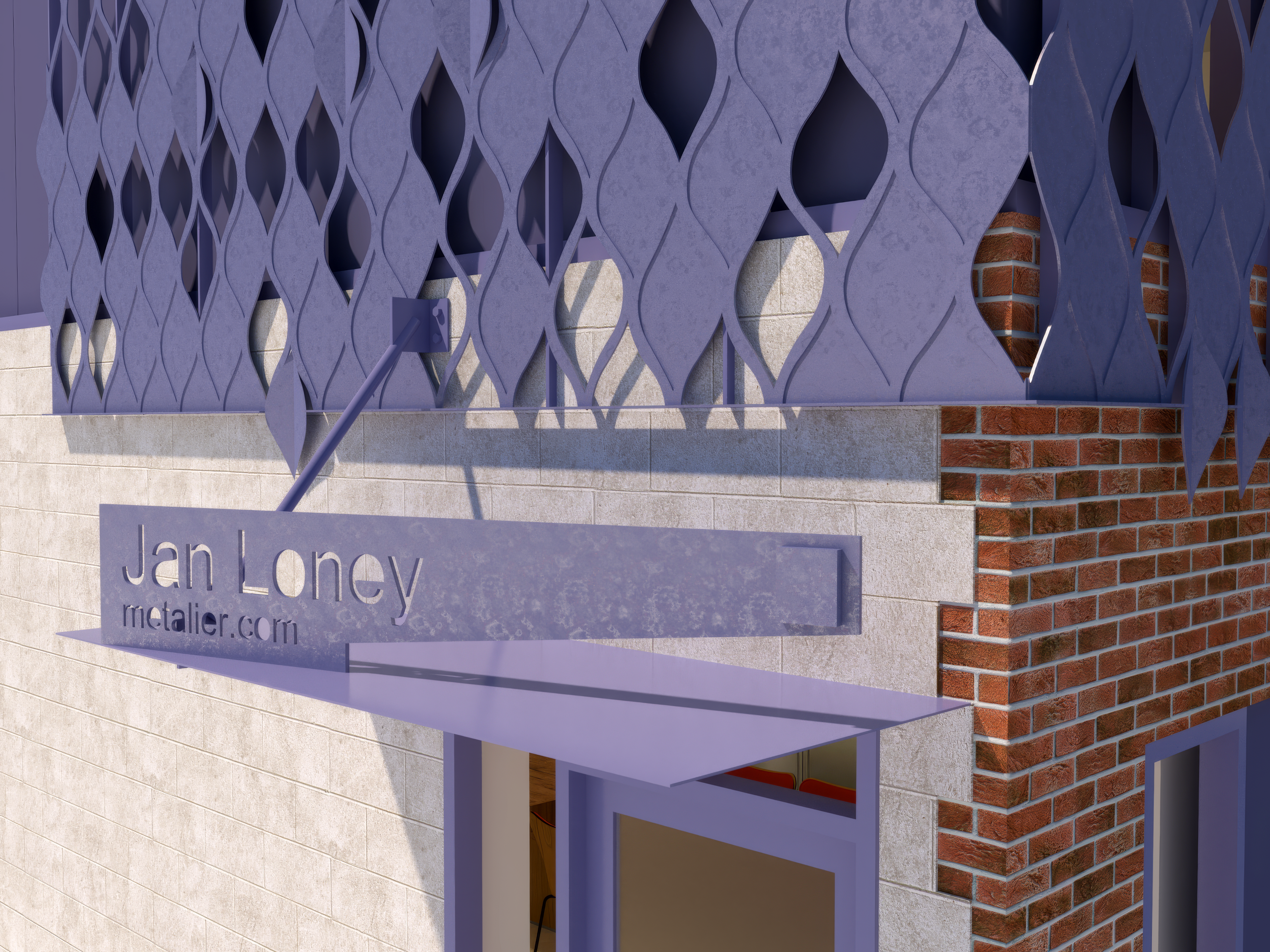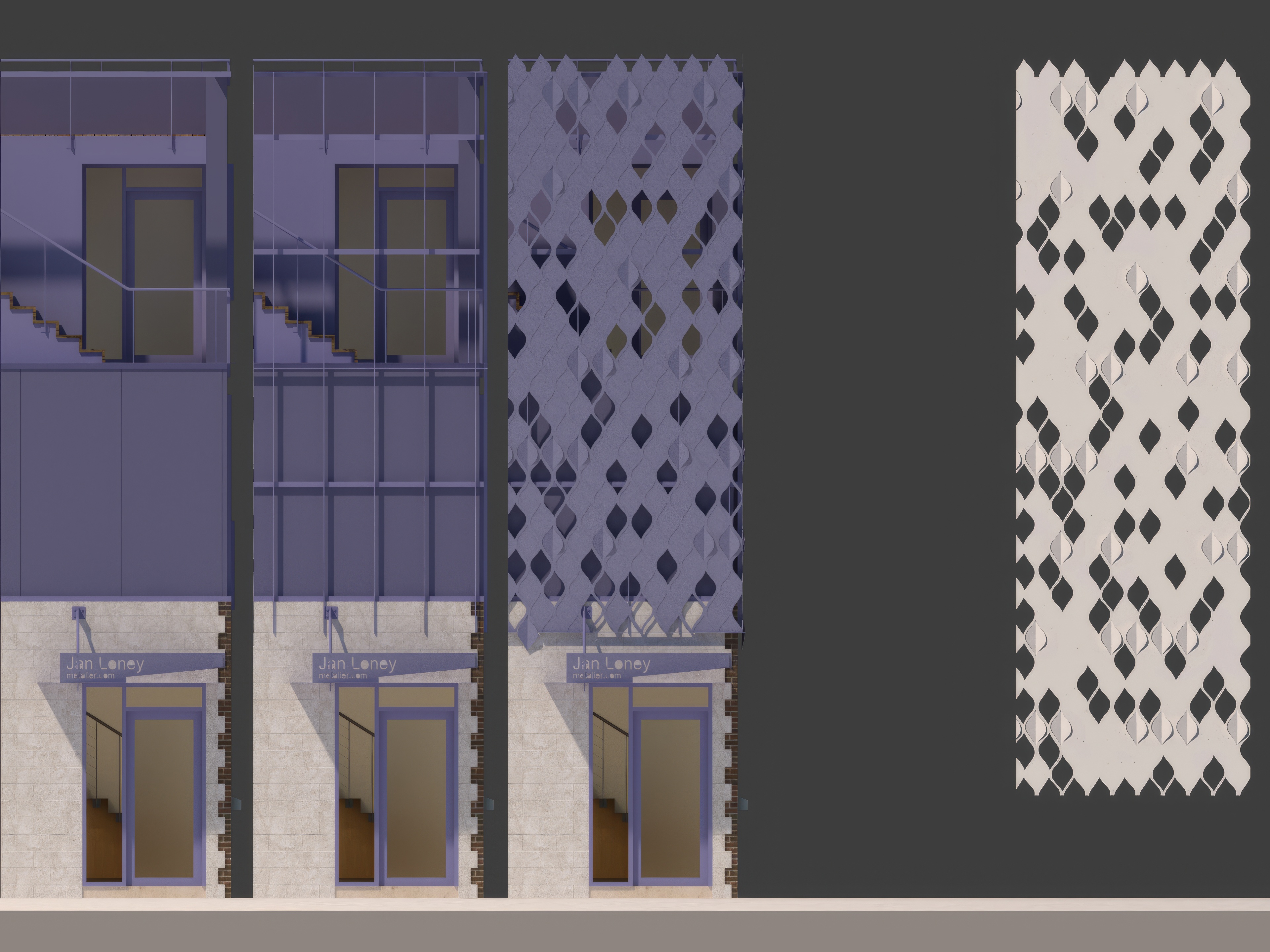Jan Loney Studio
Our plan was to transform the art work of the noted Pittsburgh metal artist, Jan Loney, into a painted steel screen that would have clad her new industrial Lawrenceville studio. First we added two stories of new construction to an existing brick garage she owns located on Plummer Street just off Butler. Then we borrowed a leaf motif from one of Jan’s recent Metalier sculptures, replicated it with our parametric software, and wrapped the pattern around the proposed addition.
Read More >This adaptive reuse project is a love letter to the American Garage and a gift to its neighbors. It is a building-sculpture that celebrates the creative energy nurtured within many American outbuildings.
We care A LOT about the architectural character of all existing Pittsburgh structures, not just those that architectural historians deem worthy, because ALL of our shared history is worth preserving. It is what binds our culture together. So we decided to preserve the existing garage precisely.
The Rainscreen
Our primary intent, certainly, was to showcase Jan’s art. Yet, rather than associate the proposed screen with the neighboring buildings, we decided to relate it to the tree canopies of Pittsburgh’s lush urban forest, which will hopefully remain far into the future. Our proposal may look different than its neighbors, but with its massing and industrial character, it wouldn’t have looked out of place.
The metal rain-screen may be eye-catching, but it’s also functional, acting as a filter to soften the light that streams through the new windows. Jan wanted to work in an environment that was not only private, but one where the light was soft and even. At certain times of day, dappled sunlight would pattern the interior. At those times the walls of her studio would have resembled a forest understory. Just as important, the screen blocks the weather, protecting the building’s skin from the rain and sun.
The Process
Jan may have wanted to work in an environment that was private but she also wanted the public to be able to discover the building. Together with her, we designed a ‘creative sanctuary’ in an old garage off an understated Pittsburgh alley.
However, our request to the City for a “change of use” triggered a requirement to meet today’s residential zoning requirements for the neighborhood.
Though the “Jan Loney Studio” project died when our request for an exception to the twenty foot required setback from the rear property line was denied due to the opposition of a neighbor, we are presenting this project in order to help normalize thoughtful, progressive, contextual design.

